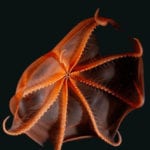 Facts
Facts  Facts
Facts  Crime
Crime 10 Dark Details of Australia’s Gruesome Unsolved Wanda Murders
 Humans
Humans 10 Unsung Figures Behind Some of History’s Most Famous Journeys
 Animals
Animals 10 Species That Refused to Go Extinct
 Weird Stuff
Weird Stuff 10 Weird Things People Used to Do at New Year’s
 Our World
Our World 10 Archaeological Discoveries of 2025 That Refined History
 Weird Stuff
Weird Stuff 10 Fascinating Facts You Might Not Know About Snow
 Miscellaneous
Miscellaneous Top 10 Things Crypto Was Supposed to Change & What Actually Did
 History
History 10 Huge Historical Events That Happened on Christmas Eve
 Music
Music 10 Surprising Origin Stories of Your Favorite Holiday Songs
 Facts
Facts Ten Unexpectedly Fascinating Facts About Rain
 Crime
Crime 10 Dark Details of Australia’s Gruesome Unsolved Wanda Murders
 Humans
Humans 10 Unsung Figures Behind Some of History’s Most Famous Journeys
Who's Behind Listverse?

Jamie Frater
Head Editor
Jamie founded Listverse due to an insatiable desire to share fascinating, obscure, and bizarre facts. He has been a guest speaker on numerous national radio and television stations and is a five time published author.
More About Us Animals
Animals 10 Species That Refused to Go Extinct
 Weird Stuff
Weird Stuff 10 Weird Things People Used to Do at New Year’s
 Our World
Our World 10 Archaeological Discoveries of 2025 That Refined History
 Weird Stuff
Weird Stuff 10 Fascinating Facts You Might Not Know About Snow
 Miscellaneous
Miscellaneous Top 10 Things Crypto Was Supposed to Change & What Actually Did
 History
History 10 Huge Historical Events That Happened on Christmas Eve
 Music
Music 10 Surprising Origin Stories of Your Favorite Holiday Songs
10 Clever Creatures That Don’t Have a Brain
As most of us with the ability to think already know, the brain is the most fundamental of all our bodily organs. Its complexity allows us not just thoughts but memories, emotions, and the ability to move, see, breathe, interact in meaningful ways with our surroundings, and manage every other process that regulates our body functions.
So it is understandably difficult to imagine not having a brain, not least because the brain is the very thing we imagine with! And yet, despite the seemingly essential nature of our brains to our comprehension of the world and survival in it, there are a number of animals that not only manage to get by but thrive without one.
Related: Ten Times the Military Fought Sea Creatures
10 Ascidian / Sea Squirt
Ascidians are cylindrical-shaped marine invertebrates that exist in various locales across the world but are found primarily in tropical and temperate waters. One end of the animal grips surfaces such as rocks, and the other features two openings that expel water, giving it the more common name of sea squirt.
While the sea squirt has a physiological construction that can be considered somewhat analogical to vertebrates—with a simple central nervous system that runs the length of its body—it does not have a brain. Its nervous system is formed of a neural tube with a sensory vesicle (a small sac), cord, neck, and tail ganglion, and this extends and sends signals from a region where a brain might be formed in other animals.
Despite having no gray matter of its own, there is nonetheless some scientific evidence to suggest that including the sea squirt in one’s diet may serve to reverse signs of aging in the human brain.[1]
9 Jellyfish
The humble jellyfish is omnipresent on beaches and in coastal waters, so many of us never give it a second thought—unless we’re stung by one. Love it or hate it, there is an undeniable grace to this marine animal when submerged in water and an undeniable absurdity to it when piled like slop on the sand.
An invertebrate, the jellyfish has no spine, as well as no bones or muscles—at least not as we would understand them. Instead, it possesses bells of fluid and propels itself through the water by squirting in the opposite direction from its target location. It should come as little surprise, then, that such a simple organism doesn’t have a brain.
Yet researchers have found that the Caribbean box jellyfish (and likely other species, too) is able to learn from experience, determining that a brain is not necessary for learning; it’s something that can happen in the jellyfish’s nerve cells themselves.[2]
8 Sea Sponge
Despite sharing its name with the decidedly non-sentient kitchen paraphernalia, only the most bougie homes have a bona fide sea sponge for cleaning the dishes. This is because, unlike the majority of man-made polyurethane sponges, the sea sponge is a living animal.
A simple, aquatic animal, the sea sponge has a dense yet porous skeleton and is eminently adaptable to its environment, even though it can’t move from place to place. Forming an essential part of the ecosystem it inhabits by filtering water, collecting bacteria, and processing carbon and nitrogen, the sponge gets by just fine with no brain, organs, or tissues.
Studies have shown, however, that the sea sponge has the beginning of a nervous system, with the genetic components of synapses—the junctions where neurons connect and communicate. This places the animal as an essential piece in the big puzzle of human evolution and an invaluable tool for studying the past.[3]
7 Oyster
A favorite on many coastal dinner tables, the oyster is a big player in seafood options the world over, not least because it’s so easy to catch. But we often forget that the oyster is an animal in its own right, with a lifespan of up to 20 years.
Part of this ignorance is due to the animal’s simplicity. Where “pork” and “beef” and other land animal products have to be disguised so consumers don’t think about the creature they are consuming, the oyster is often served up whole in its hard shell—something that seems to most of us as inanimate as a rock.
Nevertheless, the oyster has a mouth, stomach, heart, intestines, and muscles. Ic can recognize threats and even change gender several times in its life, managing all this with no brain or nervous system. The lack of a nervous system means it is not able to feel pain. This has become a point of contention between certain vegetarians and vegans, as some believe consuming these animals does not contradict the moral aspects of their diet.[4]
6 Nematode / Roundworm
The nematode, or roundworm, is one of the most abundant animals on (or under) the face of the earth. This critter can be found wiggling away not just in the garden soil or around freshwater but inside other animals and harsher conditions like vinegar and beer malts.
As simple as animals capable of existing on land come, the roundworm is bilaterally symmetrical and hermaphroditic (with primitive male and female reproductive organs). It has no brain, but that seems never to have been a problem.
Despite not having its own brain, the humble nematode has offered researchers routes into studying, and perhaps even combatting, brain damage in humans. What the worm does have is neurons, and these have demonstrated ways in which essential functions like smell can be restored by repairing neural pathways, offering general principles that could one day be used on a larger scale for human subjects.[5]
5 Coquina Clam
The coquina clam is a small, bivalve (having a shell that’s divided into left and right valves) mollusk that can be found on beaches across the world. Commonly found buried just beneath the wash, this type of clam comes in a wide variety of colors and is typically in abundance.
The coquina does not have a brain but does have small, hair-like sensors connected to its nerve clusters, which quiver with the movement of waves and allow it to surf. The quivering triggers a muscular reflex that causes the clam to leap from the sand and ride a wave to richer water.
While it’s amusing to imagine clams surfing, there is a more serious message behind this movement. The coquina is considered an indicator species for beach habitat because of its sensitivity to water conditions and environmental changes, its presence signifying a healthy and diverse beach. This allows biologists to identify when beach nourishment, in which sand is taken from an outside source and used to replace eroded beach sand, is having a negative effect on beach ecosystems.[6]
4 Sea Urchin
If most of us have seen a sea urchin up close, it’s in the form of a smooth, dried shell ornament, adorning the collections and mantelpieces of friends, relatives, and seaside keepsake stores. But the animal itself is a more prickly customer in its natural underwater habitat, with a hedgehog-like exterior of spines protecting a globular body with most of the organs we might expect to find—except for a brain!
Not only does the sea urchin not have a brain because of its exterior spikes, but it also has no place for eyes. Nevertheless, the urchin can—and does—respond to light, reacting in real time to visual stimuli via a series of dermal photoreceptor cells distributed along the small, flexible appendages that help it move.
Not the immobile object it was once assumed to be, the sea urchin can (using this decentralised form of vision) identify objects and move directly toward or away from them. This is something researchers only discovered in 2011![7]
3 Sea Anemone
Found in oceans worldwide, the carnivorous, invertebrate sea anemone is named after the anemone flower and comes in similarly colorful varieties, with the greatest variations amassing in coastal tropical waters. A tremendously hardy creature, the anemone has been found as far as Antarctica, burrowed into the Ross Ice Shelf.
The anemone’s cylindrical body hosts an array of tentacles that paralyze its prey with a neurotoxin before guiding it into the creature’s central mouth. Despite this apparent complexity, the sea anemone lacks a brain, with bodies composed of an adhesive foot on one side and a bi-functional mouth/anus and tentacles on the other.
And despite their fatal primary function, the anemone forms a symbiotic relationship with other ocean-dwelling life. This includes green algae and clownfish (of Finding Nemo fame), providing the former with exposure to sunlight and the latter a place to call home between those deadly tentacles.[8]
2 Starfish
Few sea creatures are as well recognized or universally adored as the starfish. This five-legged being is most commonly found in shallow waters, lives for 35 years on average, has eyes at the end of each leg, and uses filtered sea water to pump nutrients through its nervous system.
In spite of its name, the starfish is neither a fish nor even related to one, belonging instead to the echinoderm group of marine invertebrates. This group also includes the sea cucumber and sand dollar.
Although it doesn’t possess a brain, scientists have recently decided that the starfish does have a head. A 2023 study between colleagues at Stanford University and the University of California used micro-CT scanning to understand the animal’s structure and genes in new detail. The results were conclusive: The starfish’s body is, in fact, a head.[9]
1 Portuguese Man o’ War
Often mistakenly referred to as a jellyfish, the Portuguese man o’ war is actually a species of siphonophore, a whole other class of marine organism. This organism is comprised of a colony of single-celled organisms that float on the ocean’s surface, living at the intersectional point between water and air.
An ocean drifter, incapable of moving through the water on its own, the man o’ war instead uses a gas-filled bladder to sail with the wind. Appropriately named after a 15th-century warship, the man o’ war uses venom-filled tentacles to paralyze its prey (including small fish, plankton, and crustaceans, before gradually digesting them.
Due to its single-celled composition, the man o’ war has no brain, operating instead on the fortune of the winds and ocean currents—a fortune that often leads it astray. Extremes of weather cause large numbers of the animal to wash up on beaches, causing panic and alarm in humans, but often leading to the creature itself becoming stranded and dying in the process.[10]








